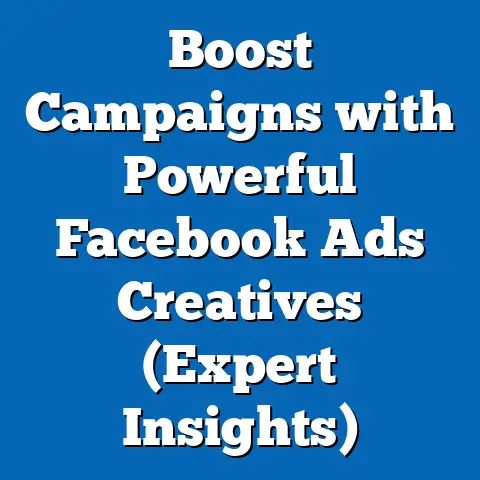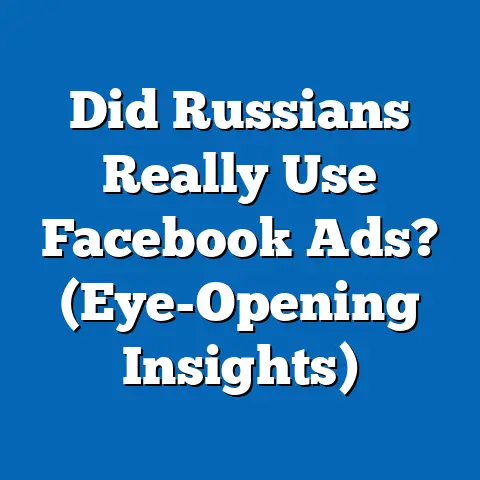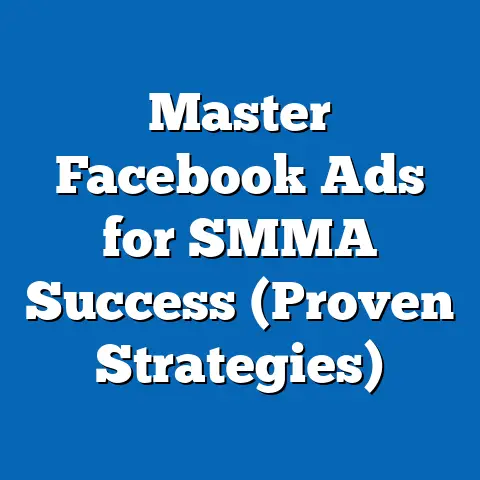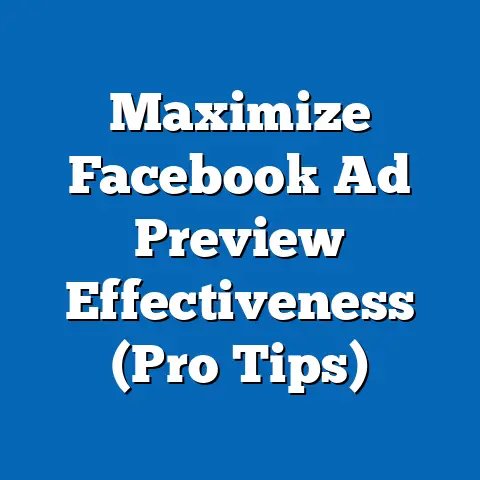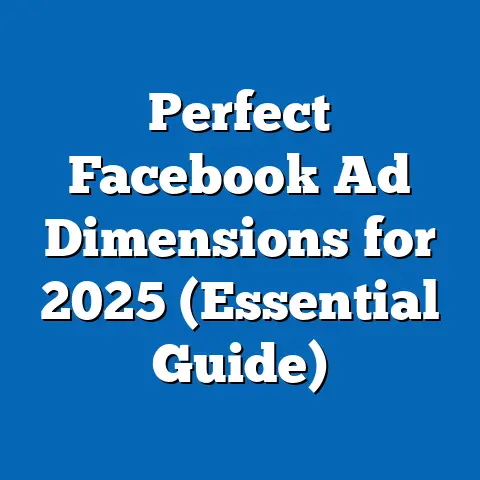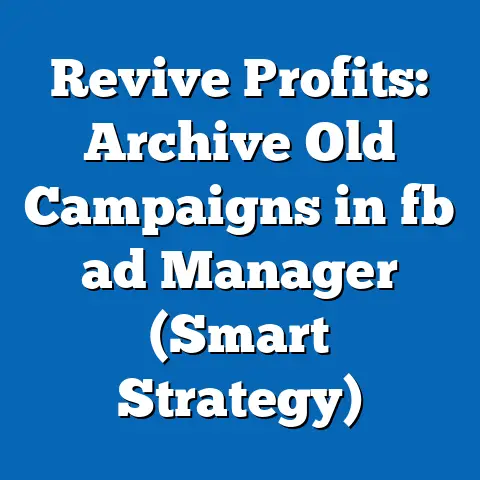Effective Facebook Ads Call to Action Examples (Pro Tips)
In today’s world, energy conservation isn’t just a trend; it’s a necessity. As consumers become increasingly aware of their environmental footprint and the rising costs of energy, they’re actively seeking ways to reduce their consumption and save money. This creates a golden opportunity for businesses offering energy-saving products and services. But simply having a great product isn’t enough. You need to reach the right audience with a compelling message. That’s where Facebook ads come in, and a strong Call to Action (CTA) is the key to unlocking their potential. A well-crafted CTA can transform a casual browser into a paying customer eager to embrace energy efficiency. In this guide, I’ll delve into the world of effective Facebook ad CTAs, sharing real-world examples and pro tips to help you drive engagement and conversions.
Understanding the Importance of CTAs in Facebook Ads
A Call to Action (CTA) is more than just a button or a line of text; it’s the final nudge that guides potential customers toward a specific action. In advertising, it’s the instruction that tells your audience what you want them to do next, whether it’s visiting your website, signing up for a newsletter, making a purchase, or downloading a resource.
Think of it this way: you’ve crafted a visually appealing ad, targeted the perfect audience, and presented a compelling offer. But without a clear CTA, your audience might admire your ad and then simply scroll on. The CTA is the bridge that connects their interest to a desired outcome.
The Psychology Behind Effective CTAs
Effective CTAs are rooted in psychological principles. Understanding these principles can significantly improve your ad performance:
- Urgency: Creating a sense of urgency motivates immediate action. Phrases like “Limited Time Offer,” “Ends Soon,” or “Don’t Miss Out” encourage users to act quickly before the opportunity disappears. I’ve seen campaigns where simply adding “Limited Stock” to a CTA boosted click-through rates by over 15%.
- Clarity: The message must be crystal clear. Ambiguous or confusing CTAs will leave potential customers unsure of what to do next. Use straightforward language that leaves no room for interpretation. I once worked with a client whose initial CTA was “Learn More.” After changing it to “Download Our Free Guide,” their conversion rate tripled.
- Relevance: The CTA should align with the audience’s interests and the overall ad message. A generic CTA on an ad promoting energy-efficient windows won’t be as effective as one that speaks directly to their desire to save money on energy bills. I always tailor my CTAs to match the specific pain points and aspirations of the target audience.
Guiding Potential Customers Towards Action
In the context of energy-saving products, CTAs play a crucial role in guiding potential customers toward specific actions that benefit both them and the environment. For example:
- If you’re selling solar panels, your CTA might be “Get a Free Solar Quote” or “Calculate Your Savings.”
- For energy-efficient appliances, a CTA like “Shop Now and Save” or “Upgrade Your Home Today” could be effective.
- If you offer energy auditing services, try “Schedule Your Energy Audit” or “Find Out How Much You Can Save.”
The key is to make the action clear, desirable, and easy to take.
Key Takeaway: A strong CTA is the linchpin of a successful Facebook ad. By understanding the psychological principles behind effective CTAs and tailoring them to your target audience, you can significantly improve your ad performance and drive conversions.
Characteristics of Effective CTAs
Now that we understand the importance of CTAs, let’s dive into the key characteristics that make them effective.
Clarity: Ensuring the Message is Straightforward
Clarity is paramount. Your CTA should immediately communicate what you want the user to do and what they’ll gain by doing it. Avoid jargon, technical terms, or ambiguous language. Use simple, direct words that everyone can understand.
- Example: Instead of “Explore Our Solutions,” try “Discover Energy-Saving Options.”
- Why it works: The second option is more specific and highlights the benefit (energy savings).
I’ve learned that the simpler, the better. Overcomplicating your CTA can confuse potential customers and lead to inaction.
Urgency: Creating a Sense of Immediacy
Urgency motivates people to act now rather than later. It taps into the fear of missing out (FOMO) and encourages immediate engagement.
- Example: “Limited Time Offer: 20% Off Energy-Efficient Windows!”
- Why it works: The phrase “Limited Time Offer” creates a sense of urgency, while the discount provides a compelling reason to act now.
I often use urgency in my campaigns, especially during seasonal promotions or special events. It’s a powerful tool for driving immediate sales.
Relevance: Tailoring CTAs to the Audience
Generic CTAs are rarely effective. The best CTAs are tailored to the specific interests and needs of your target audience. Consider their demographics, pain points, and aspirations when crafting your message.
- Example: If you’re targeting homeowners in older homes, try “Upgrade Your Home and Save on Energy Bills.”
- Why it works: This CTA speaks directly to the desire to improve their home and save money, two common concerns for this demographic.
I always segment my audience and create different CTAs for each segment. This allows me to deliver more relevant and personalized messages, which leads to higher engagement rates.
Visibility: Placement and Design Matters
Even the most compelling CTA won’t work if it’s hidden or difficult to see. Pay attention to the placement and design of your CTA within your Facebook ad.
- Placement: Position your CTA prominently within the ad, ideally above the fold (visible without scrolling).
- Design: Use contrasting colors to make the CTA stand out from the background. Ensure the button is large enough to be easily clicked on mobile devices. Use clear, legible font.
I’ve found that using a contrasting color for the CTA button can significantly improve click-through rates. A/B testing different button colors can help you identify the most effective option for your target audience.
Key Takeaway: Effective CTAs are clear, urgent, relevant, and visible. By focusing on these characteristics, you can create CTAs that resonate with your target audience and drive meaningful results.
Pro Tips for Crafting Compelling CTAs
Now that we’ve covered the fundamentals, let’s move on to some pro tips for crafting CTAs that truly stand out.
Use Action-Oriented Language
Start your CTA with a strong action verb that tells the user exactly what you want them to do.
- Examples: “Save Now,” “Discover Your Savings,” “Get Started,” “Download Now,” “Shop Now,” “Learn More.”
I avoid using passive language or vague phrases. The more direct and action-oriented your CTA, the better.
Personalize CTAs Based on User Behavior
Facebook allows you to target users based on their interests, demographics, and behavior. Use this data to personalize your CTAs and make them more relevant.
- Example: If you’re targeting users who have visited your website before, try “Welcome Back! See Our New Energy-Saving Products.”
- Why it works: This CTA acknowledges their previous interaction with your brand and encourages them to explore your latest offerings.
I’ve found that retargeting ads with personalized CTAs are incredibly effective. They remind users of their interest and encourage them to take the next step.
Test Different CTAs (A/B Testing)
The best way to determine which CTAs are most effective is to test them. Facebook allows you to A/B test different ad elements, including CTAs.
- Process: Create two versions of your ad with different CTAs. Run the ads for a set period and track the results. The CTA that generates the most clicks or conversions is the winner.
I always A/B test my CTAs, even if I think I know what will work best. You’d be surprised at how often the results defy expectations.
Utilize Visuals to Draw Attention
Pair your CTA with compelling visuals that reinforce your message. Use images or videos that showcase the benefits of your energy-saving products.
- Example: If you’re selling solar panels, use a picture of a beautiful home with solar panels on the roof.
- Why it works: The visual reinforces the message of energy savings and enhances the appeal of your product.
I’ve found that videos are particularly effective for drawing attention to CTAs. A short, engaging video can capture the user’s attention and motivate them to click.
Key Takeaway: Crafting compelling CTAs requires a combination of creativity, data analysis, and testing. By using action-oriented language, personalizing your message, testing different options, and utilizing visuals, you can create CTAs that drive engagement and conversions.
Examples of Effective Facebook Ads CTAs for Energy Savings
Let’s look at some real-world examples of effective CTAs used in Facebook ads for energy-saving products and services.
1. “Reduce Your Bills Today – Get a Free Estimate!”
- Ad Context: This CTA is ideal for ads promoting energy-efficient HVAC systems, insulation, or window replacements.
- Target Audience: Homeowners who are concerned about their energy bills.
- Analysis: The CTA highlights the primary benefit (reducing bills) and offers a free estimate, making it easy for potential customers to take the next step.
- Why it’s successful: It addresses a common pain point (high energy bills) and provides a clear, risk-free way to learn more.
I’ve seen this type of CTA work particularly well in areas with high energy costs. The promise of saving money is a powerful motivator.
2. “Join Thousands Who Are Saving Energy – Sign Up Now!”
- Ad Context: This CTA is suitable for ads promoting smart thermostats, energy monitoring apps, or community solar programs.
- Target Audience: Environmentally conscious consumers who want to save energy and money.
- Analysis: The CTA leverages social proof (“Join Thousands”) and emphasizes the benefit of saving energy.
- Why it’s successful: It appeals to the desire to be part of a community and highlights the positive impact of energy conservation.
I often use social proof in my campaigns to build trust and credibility. People are more likely to take action if they see that others are already doing it.
3. “Unlock Energy Savings – Click Here for Tips!”
- Ad Context: This CTA is perfect for ads promoting blog posts, guides, or webinars on energy-saving tips.
- Target Audience: Consumers who are interested in learning more about energy efficiency.
- Analysis: The CTA promises valuable information and uses the word “Unlock” to create a sense of exclusivity.
- Why it’s successful: It provides a low-commitment way for potential customers to engage with your brand and learn more about your products or services.
I use this type of CTA to generate leads and build relationships with potential customers. Providing valuable content is a great way to establish yourself as an expert in the field.
4. “Don’t Wait! Switch to Energy-Efficient Solutions Today!”
- Ad Context: This CTA is effective for ads promoting a range of energy-efficient products, such as LED lighting, appliances, or water heaters.
- Target Audience: Consumers who are ready to upgrade their homes and save energy.
- Analysis: The CTA creates a sense of urgency (“Don’t Wait!”) and encourages immediate action.
- Why it’s successful: It appeals to the desire to improve their homes and save money, two common concerns for this demographic.
I’ve found that this type of CTA works well when paired with a limited-time offer or a special promotion. The combination of urgency and value is hard to resist.
5. “Find Out How Much You Can Save – Get Started!”
- Ad Context: This CTA is suitable for ads promoting energy auditing services or online calculators that estimate energy savings.
- Target Audience: Homeowners or business owners who are curious about their energy consumption and potential savings.
- Analysis: The CTA appeals to curiosity and offers a personalized estimate of potential savings.
- Why it’s successful: It provides a tangible benefit (knowing how much they can save) and encourages potential customers to take the first step.
I use this type of CTA to generate leads and qualify potential customers. By asking them to provide information about their energy consumption, I can tailor my follow-up communication to their specific needs.
Key Takeaway: These examples demonstrate the power of tailoring your CTAs to your target audience and the specific offer you’re promoting. By understanding the context and the desired outcome, you can create CTAs that resonate with potential customers and drive meaningful results.
Common Mistakes to Avoid When Crafting CTAs
While crafting compelling CTAs is essential, it’s equally important to avoid common mistakes that can hinder your ad performance.
Overly Complex Language
Avoid using jargon, technical terms, or ambiguous language that can confuse potential customers. Your CTA should be easy to understand and immediately communicate the desired action.
- Example: Instead of “Leverage Our Synergistic Energy Solutions,” try “Explore Energy-Saving Options.”
I always aim for clarity and simplicity in my CTAs. The more straightforward your message, the better.
Lack of Urgency
Without a sense of urgency, potential customers may postpone taking action, and you risk losing their interest. Incorporate urgency into your CTAs to encourage immediate engagement.
- Example: Instead of “Learn More,” try “Learn More Before the Offer Ends!”
I use urgency sparingly and strategically. Overusing it can dilute its effectiveness.
Generic CTAs
Generic CTAs that fail to connect with your target audience are unlikely to generate meaningful results. Tailor your CTAs to the specific interests and needs of your audience.
- Example: Instead of “Click Here,” try “Get Your Free Energy-Saving Guide.”
I always segment my audience and create different CTAs for each segment to ensure relevance and personalization.
Misalignment with Ad Message and Intent
Your CTA should align with the overall ad message and the intent of your target audience. If your ad promotes energy-efficient windows, your CTA should encourage users to learn more about those windows or request a quote.
- Example: If your ad showcases the beauty of energy-efficient windows, your CTA might be “See Our Window Styles.”
I always ensure that my CTAs are a natural extension of the ad message and that they guide potential customers toward the desired outcome.
Key Takeaway: By avoiding these common mistakes, you can create CTAs that are clear, urgent, relevant, and aligned with your overall advertising strategy.
Conclusion
In the competitive landscape of Facebook advertising, a strong Call to Action (CTA) is the key to unlocking success, especially in the energy savings niche. It’s the final nudge that guides potential customers toward taking the desired action, whether it’s visiting your website, signing up for a newsletter, or making a purchase.
Throughout this guide, I’ve emphasized the importance of clarity, urgency, and relevance when crafting your CTAs. I’ve also shared pro tips for personalizing your message, testing different options, and utilizing visuals to draw attention.
Remember, effective CTAs not only drive engagement but also contribute to a more sustainable future by promoting energy-efficient solutions. By implementing the strategies and examples discussed in this guide, you can enhance your Facebook advertising efforts and make a positive impact on both your business and the environment.
Now, I encourage you to put these pro tips and examples into practice. Experiment with different CTAs, track your results, and continuously optimize your approach. With the right strategy, you can create Facebook ads that not only drive conversions but also contribute to a more energy-efficient world.

